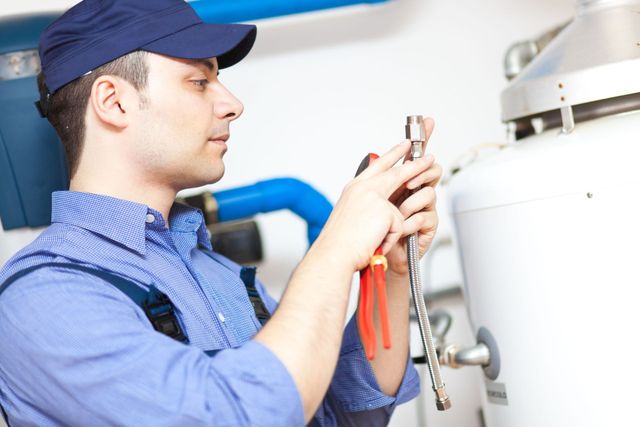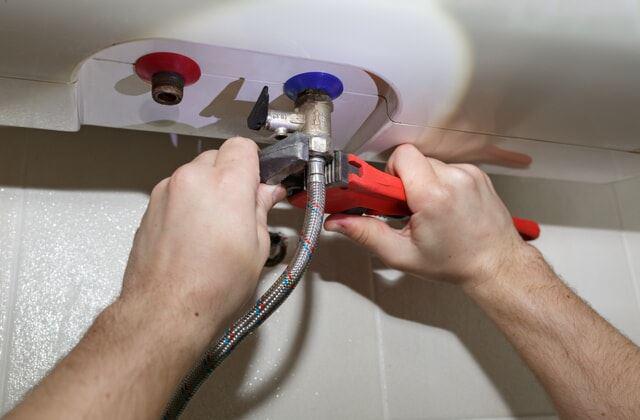Expert Guidance on Maintaining Your Home's Hot Water SystemKey Guidance on Caring for Your Home's Hot Water System
Expert Guidance on Maintaining Your Home's Hot Water SystemKey Guidance on Caring for Your Home's Hot Water System
Blog Article
We've come across the article about Tips For Maintaining Your Hot Water Heater down the page on the net and reckoned it made good sense to write about it with you over here.

Hot water is essential for day-to-day convenience, whether it's for a rejuvenating shower or washing recipes. To guarantee your hot water system runs efficiently and lasts much longer, routine maintenance is key. This write-up offers sensible suggestions and understandings on how to preserve your home's hot water system to stay clear of disturbances and costly fixings.
Intro
Maintaining your home's warm water system may seem overwhelming, however with a couple of basic actions, you can guarantee it operates efficiently for many years ahead. This guide covers whatever from understanding your warm water system to DIY upkeep ideas and knowing when to call in expert help.
Significance of Keeping Your Hot Water System
Routine maintenance not just extends the life-span of your warm water system but likewise guarantees it operates successfully. Overlooking maintenance can bring about decreased effectiveness, greater energy costs, and even early failing of the system.
Signs Your Hot Water System Demands Upkeep
Recognizing when your hot water system requires attention can stop major problems. Look out for signs such as irregular water temperature, unusual sounds from the heating unit, or corroded water.
Understanding Your Hot Water System
Prior to diving into upkeep tasks, it's handy to understand the fundamental parts of your hot water system. Commonly, this includes the hot water heater itself, pipes, anode rods, and temperature level controls.
Monthly Upkeep Tasks
Regular regular monthly checks can assist capture minor problems prior to they intensify.
Purging the Water Heater
Flushing your hot water heater gets rid of sediment accumulation, boosting performance and extending its life.
Monitoring and Replacing Anode Rods
Anode poles protect against corrosion inside the tank. Examining and changing them when worn out is essential.
Evaluating and Adjusting Temperature Level Settings
Adjusting the temperature level setups makes certain optimal performance and security.
Do It Yourself Tips for Maintenance
You can perform several maintenance tasks yourself to keep your hot water system in top condition.
Looking for Leakages
Regularly inspect pipes and connections for leaks, as these can result in water damages and higher expenses.
Evaluating Pressure Alleviation Valves
Evaluating the pressure relief valve ensures it works properly and stops extreme pressure buildup.
Protecting Pipelines
Protecting warm water pipelines minimizes heat loss and can save energy.
When to Call a Professional
While DIY maintenance is useful, some issues require specialist know-how.
Complicated Problems Needing Expert Aid
Instances consist of major leaks, electric troubles, or if your hot water heater is constantly underperforming.
Routine Expert Maintenance Benefits
Specialist upkeep can consist of complete assessments, tune-ups, and guaranteeing compliance with safety standards.
Final thought
Routine maintenance of your home's warm water system is vital for efficiency, longevity, and cost financial savings. By adhering to these tips and recognizing when to seek professional help, you can guarantee a dependable supply of hot water without unexpected interruptions.
How to Maintain an Instant Hot Water Heater
Before tinkering with your hot water heater, make sure that it’s not powered on. You also have to turn off the main circuit breaker and shut off the main gas line to prevent accidents. Also turn off the water valves connected to your unit to prevent water from flowing into and out of the appliance. 2. When you’re done, you have to detach the purge valves’ caps. These look like the letter “T” and are situated on either side of the water valves. Doing so will release any pressure that has accumulated inside the valves while at the same time avoid hot water from shooting out and burning your skin. 3. When the purge valves’ caps are removed, you have to connect your hosing lines to the valves. Your unit should have come with three hoses but if it didn’t, you can purchase these things from any hardware or home repair shops. You can also get them from retail stores that sell water heating systems. Read the user’s manual and follow it to complete this task properly. When the hosing lines are connected, open the purge port’s valves. 4. You should never use harsh chemical cleaners or solutions when cleaning your unit. Make use of white vinegar instead. It should be undiluted and you’ll probably use about 2 gallons. 5. Now flush your water heater. This task should probably take about 40 minutes. We can’t give you specific directions for this because the procedure is carried out depending on the type, model and brand of your heater. With that being said, refer to the user’s manual. 6. When you’re done draining the unit, you have to turn off the purge port valves again. Remove the hosing lines that you earlier installed on each of the water valves. Put the valve caps (purge port) back in their respective places and be very careful so as not to damage the rubber discs that are found inside these caps. 7. Now that everything’s back in place, check your user’s manual again to find out how to reactivate your water heating system. 8. Once it is working, turn one of your hot water faucets on just to let air pass through the heater’s water supply pipes. Leave the tap on until water flows smoothly out of it. https://www.orrplumbing.com/blog/2014/september/how-to-maintain-an-instant-hot-water-heater/

We were shown that write-up about Tips on Maintaining a Water Heater through someone on another domain. Liked our article? Please quickly share it. Let somebody else find it. Thanks for being here. Don't hesitate to come visit our site back soon.
About Report this page